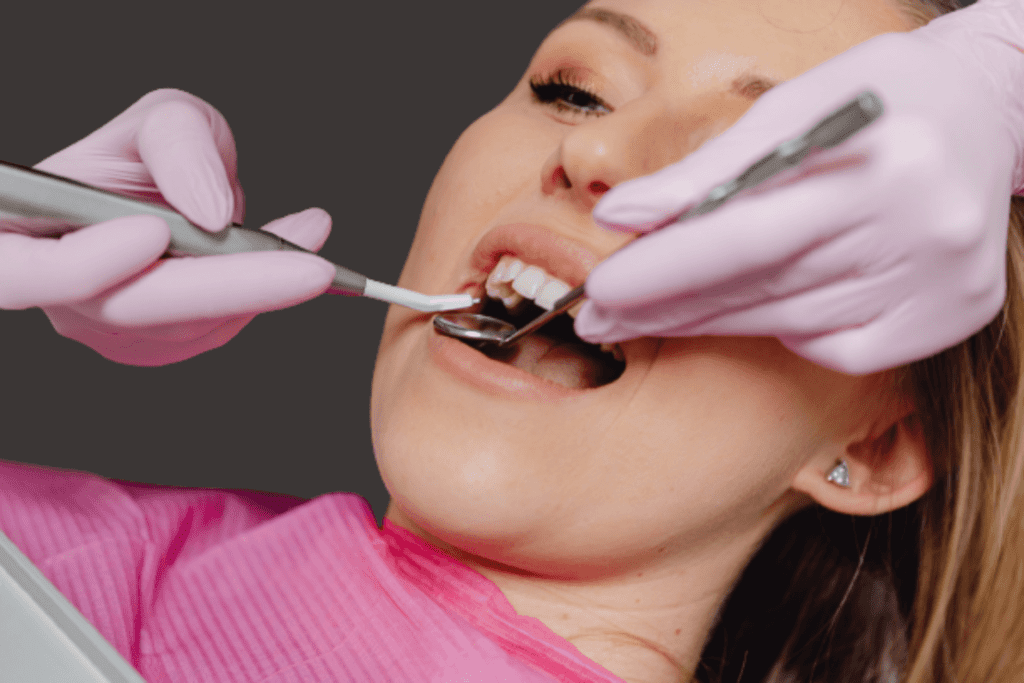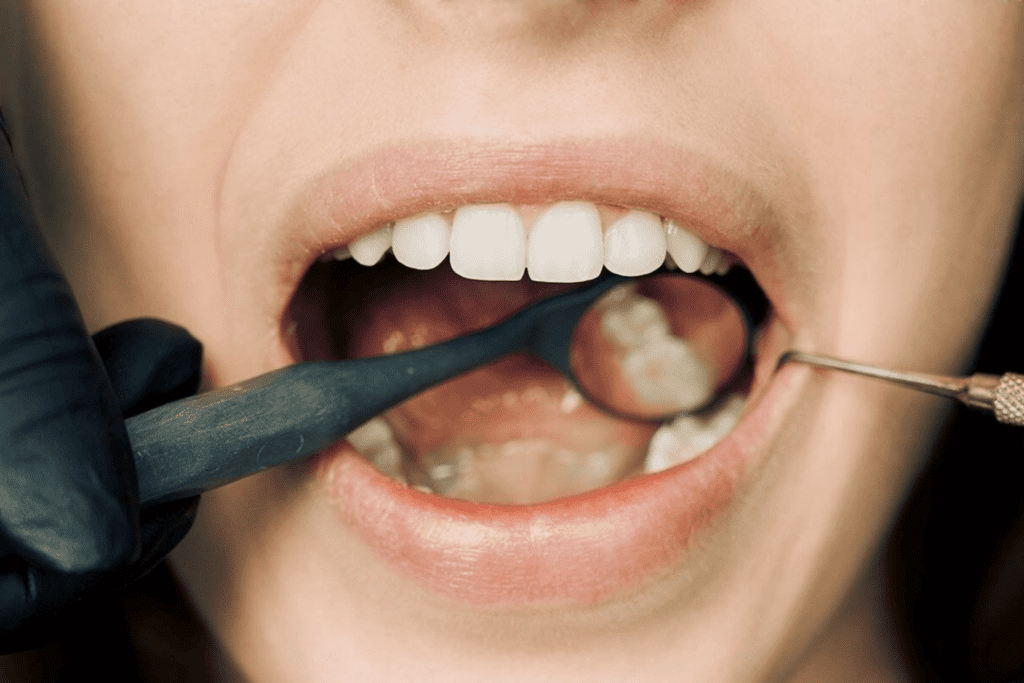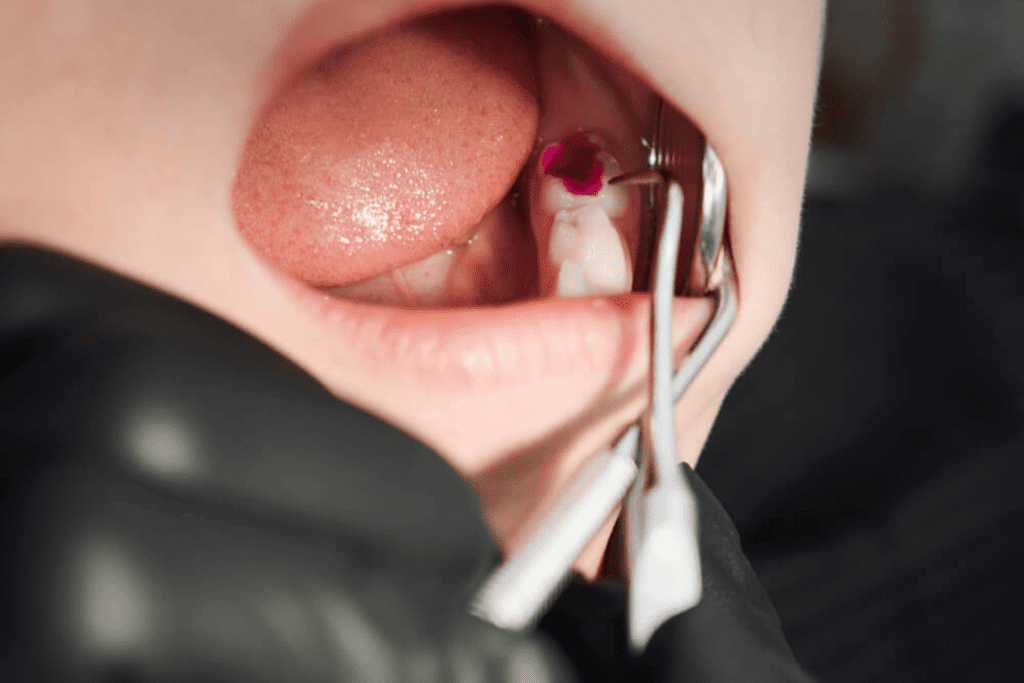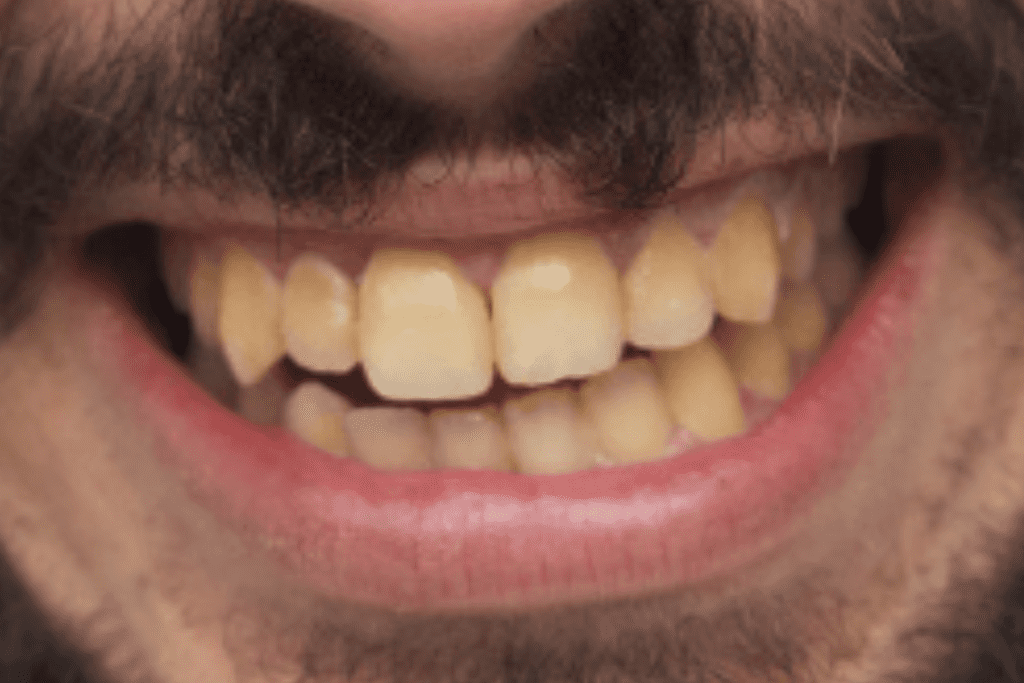We sometimes add products that we believe may be beneficial to our readers. We may receive a small commission if you purchase using the links on this page. Read our affiliate disclaimer
Tooth pain (Toothache) refers to the unpleasant sensation or discomfort experienced in or around a tooth. It can manifest as a dull ache, sharp stabbing pain, throbbing sensation, or sensitivity to temperature changes. Tooth pain can vary in intensity and duration, ranging from mild discomfort to severe, persistent pain. It can affect a single tooth or multiple teeth and may be accompanied by other symptoms such as swelling, gum tenderness, or bad breath. Identifying the cause of tooth pain is crucial for effective treatment and long-term oral health.
Table of Contents
ToggleTooth Pain: Causes
Understanding the causes of tooth pain is essential for effective treatment and prevention. Tooth pain can arise from various factors, including dental decay, gum disease, tooth fractures, tooth sensitivity, abscesses, and dental infections. Identifying the underlying cause of tooth pain is crucial in determining the most appropriate treatment approach. By addressing the root cause, individuals can alleviate discomfort, restore oral health, and prevent further dental complications.

Dental Decay and Cavities
Dental decay occurs when bacteria in the mouth produce acids that gradually erode the tooth enamel. This leads to the formation of cavities or holes in the teeth. As the decay progresses, it can reach the sensitive inner layers of the tooth, causing pain and sensitivity.
Gum Disease
Poor oral hygiene can lead to the accumulation of plaque and tartar along the gum line. This buildup irritates the gums, causing inflammation and infection. Early-stage gum disease, known as gingivitis, can cause gum tenderness and bleeding. Neglecting treatment can lead to the progression of periodontitis, a condition that can result in tooth pain, gum recession, and ultimately, tooth loss.
Dental Abscess
A dental abscess forms when a bacterial infection reaches the root of a tooth or the surrounding gums. It typically causes severe, throbbing pain, swelling, and tenderness. Abscesses often require immediate dental attention as they can lead to more severe infections if left untreated.
Related: Tooth Abscess
Tooth Fracture or Cracks
Accidents, injuries, or biting on hard objects can result in tooth fractures or cracks. When the tooth structure is compromised, it can expose the sensitive inner layers, leading to tooth pain and increased sensitivity to temperature changes or pressure.
Dental Procedures
Certain dental procedures, such as fillings, root canals, or extractions, may cause temporary tooth sensitivity or pain. This discomfort is usually transient and subsides as the affected area heals.
Bruxism (Teeth Grinding)
Bruxism refers to the habit of grinding or clenching teeth, often during sleep. The excessive force exerted on the teeth can cause tooth pain, sensitivity, and even jaw joint (TMJ) discomfort. Long-term bruxism can result in tooth wear, fractures, and other dental complications.
Sinus Infections
Sinus infections can sometimes cause referred pain to the upper teeth. The pressure and inflammation in the sinuses can create a sensation similar to toothache, particularly in the premolar and molar regions of the upper jaw.
Toothache: Symptoms
Understanding and identifying the below symptoms can help individuals take the necessary steps to address the underlying dental issue and alleviate tooth pain.
- Persistent or intermittent toothache: Pain that lingers or comes and goes.
- Sensitivity to hot or cold temperatures: Discomfort or pain when consuming hot or cold foods and beverages.
- Pain when biting or chewing: Sharp pain when pressure is applied to the tooth.
- Swelling of the gums or face: Inflammation or swelling in the gum tissue or facial area near the affected tooth.
- Gum tenderness or bleeding: Soreness or bleeding of the gums, especially during brushing or flossing.
- Tooth mobility: Looseness or movement of the affected tooth.
- Bad breath or foul taste in the mouth: Persistent unpleasant breath odor or an unpleasant taste associated with the affected tooth.
Types of Tooth Pain
When it comes to tooth pain, it can manifest in different ways depending on the underlying cause. Here are some common types of tooth pain:
Sensitivity to Temperature
This type of toothache occurs when the teeth are exposed to hot or cold substances. It may cause a sharp, fleeting pain that subsides quickly once the stimulus is removed. Tooth sensitivity can be an indication of enamel erosion, gum recession, or exposed tooth roots.
Persistent Ache
A dull, persistent ache is a common type of tooth pain associated with dental decay or cavities. The pain may be localized to a specific tooth or spread to neighboring teeth. It can worsen with biting or applying pressure and may be accompanied by sensitivity.
Sharp, Intense Pain
Sharp, intense pain often indicates a more severe dental problem, such as an abscess or infection. This type of pain can be constant or occur in sudden, severe bursts. It may be accompanied by swelling, pus formation, and tenderness in the affected area.
Throbbing Pain
Throbbing tooth pain is characterized by a pulsating sensation that can be persistent or intermittent. It is often associated with inflammation or infection in the tooth or surrounding tissues. Throbbing pain can be aggravated by lying down or changes in head position.
Pain when Chewing
Toothache that occurs specifically when biting or chewing suggests possible dental issues such as cracks, fractures, or decay. The pressure applied during chewing can cause discomfort or sharp pain in the affected tooth.
Radiating Pain
Radiating pain refers to tooth pain that extends to other areas, such as the jaw, face, or ears. It can be indicative of a more advanced dental problem, such as a dental abscess, sinus infection, or temporomandibular joint (TMJ) disorder
Phantom Pain
Phantom tooth pain is a type of persistent pain that continues even after tooth extraction. It may be caused by nerve damage, referred pain from neighboring teeth, or psychological factors. Seeking professional evaluation is necessary to determine the cause and provide appropriate management.
Toothache Treatment Options
When experiencing a toothache, seeking timely and appropriate treatment is essential for relief and resolving the underlying issue. Treatment options for tooth pain vary depending on the cause and severity of the condition. Professional dental care is often necessary to accurately diagnose the problem and recommend the most effective treatment approach. This section provides an overview of common dental procedures, medications, and home remedies that may be utilized to address tooth pain.
Dental Examination
A comprehensive dental examination, including X-rays, helps identify the underlying cause of tooth pain and guides appropriate treatment.
Dental Fillings
If tooth decay or cavities are causing the pain, the dentist will remove the decayed portion and fill the tooth with a dental filling material such as composite resin or amalgam. This restores the tooth’s structure and alleviates pain.
Root Canal Treatment
When the dental pulp becomes infected or inflamed, a root canal procedure may be necessary. The procedure includes the removal of infected tissue, thorough cleaning of the root canal, and subsequent sealing to prevent future infections. This procedure can save the natural tooth and relieve pain.
Extraction
In cases where the tooth is severely damaged, decayed beyond repair, or caused infection, extraction may be the only viable option. Dentists may recommend tooth replacement options such as dental implants, bridges, or dentures to restore functionality and aesthetics.
Antibiotics
If an infection is present, dentists may prescribe antibiotics to eliminate the bacteria and control the infection. Antibiotics are commonly administered alongside other dental treatments.
Pain Management
Over-the-counter pain relievers such as ibuprofen or acetaminophen can provide temporary relief from tooth pain. Dentists may also recommend topical gels containing benzocaine to numb the affected area. For severe pain, stronger prescription medications may be prescribed.
Oral Hygiene and Lifestyle Changes
Maintaining good oral hygiene practices, including regular brushing with a soft-bristled toothbrush, flossing daily, and using mouthwash, helps prevent tooth decay and gum disease. Dentists may also recommend lifestyle changes, such as wearing a nightguard to protect teeth from bruxism or addressing habits that contribute to tooth pain.
Home Remedies for Tooth Pain
While it’s always important to consult a dentist for a proper diagnosis and treatment of tooth pain, some home remedies may provide temporary relief. Here are a few home cures you can try:
Saltwater Rinse:
Mix half a teaspoon of salt with eight ounces of warm water until it dissolves completely. Rinse your mouth with this solution for about 30 seconds before spitting it out. Saltwater helps reduce inflammation and can provide temporary relief from tooth pain.
Clove Oil:
Clove oil contains natural analgesic and antibacterial properties that can help alleviate tooth pain. Take a cotton ball and apply a small amount of clove oil, then gently dab it onto the affected area. Alternatively, you can mix a few drops of clove oil with a carrier oil, such as olive oil, and apply it to the affected tooth.
Cold Compress:
Place a cold compress or ice pack wrapped in a thin cloth on the cheek near the painful tooth. The cold temperature can help numb the area and reduce swelling, providing temporary relief from tooth pain.
Peppermint Tea:
Brew a cup of peppermint tea using a teabag or dried peppermint leaves. Allow the tea to cool, then swish it around in your mouth or use it as a mouth rinse. Peppermint has natural numbing properties that may help soothe tooth pain.
Garlic:
Garlic has antimicrobial properties that can help alleviate tooth pain caused by an infection. Crush a garlic clove to create a paste and apply it directly to the affected tooth. Leave it on for a few minutes, then rinse your mouth thoroughly.
Over-the-Counter Pain Relievers:
Nonsteroidal anti-inflammatory drugs (NSAIDs) such as ibuprofen or acetaminophen can temporarily relieve tooth pain and reduce inflammation. Adhere to the guidelines provided on the packaging and seek guidance from a healthcare professional if you have any concerns.
Maintain Good Oral Hygiene:
To maintain oral hygiene, brush your teeth gently twice a day using a toothbrush with soft bristles and fluoride toothpaste. Additionally, make it a habit to floss daily to eliminate food particles and plaque from between your teeth. Maintaining good oral hygiene can help prevent tooth decay and gum disease, reducing the chances of experiencing tooth pain.
Diagnosis of Tooth Pain
The diagnosis of tooth pain typically involves a thorough examination by a dentist. Here are the steps involved in diagnosing tooth pain:
Dental History
The dentist will begin by asking about your dental history, including any previous dental procedures, oral health habits, and the duration and nature of the toothache. Providing detailed information about your symptoms can help in the diagnostic process.
Visual Examination
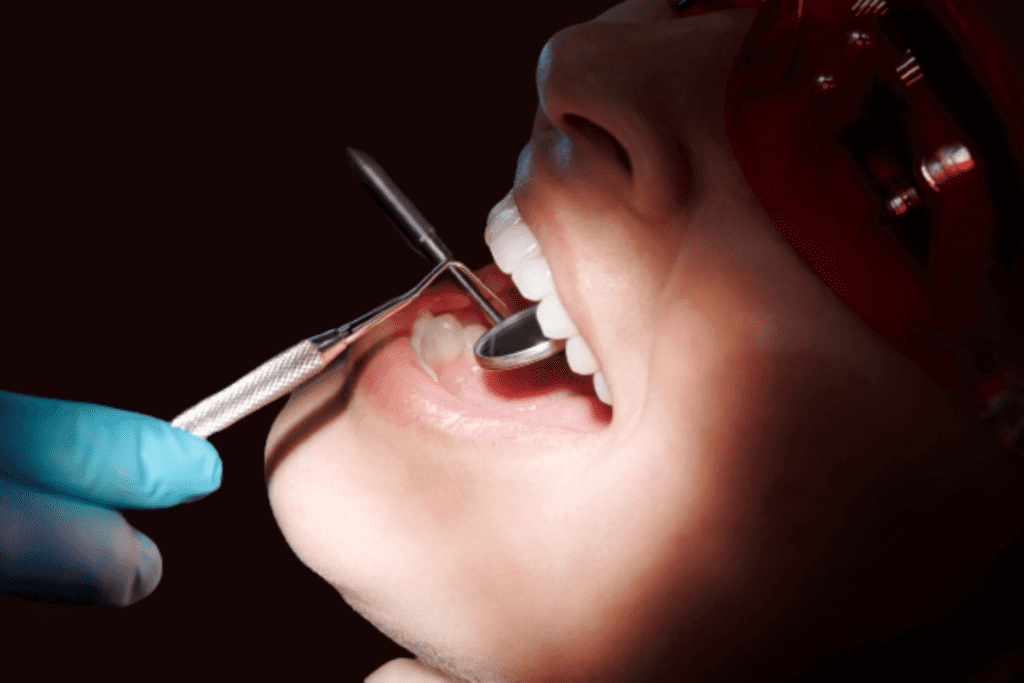
The dentist will visually inspect your teeth, gums, and surrounding oral tissues for any signs of dental decay, gum disease, or other visible abnormalities. They may use a dental mirror and a dental explorer to assess the teeth for cavities, cracks, or other visible issues.
Dental X-rays
X-rays are a valuable diagnostic tool that allows dentists to visualize the internal structures of the teeth, such as the roots and bone. X-rays can reveal dental decay, abscesses, impacted teeth, fractures, and other hidden problems that may not be visible during a visual examination.
Probing and Palpation
The dentist may use a dental probe to gently measure the depth of gum pockets around the teeth. This helps in assessing the health of the gums and identifying signs of gum disease. They may also palpate the surrounding tissues to check for swelling, tenderness, or signs of infection.
Sensitivity Testing
To determine the extent of tooth sensitivity, the dentist may use various stimuli such as temperature changes (cold air or a cold stimulus), air pressure, or gentle tapping on the tooth to assess your pain response. This helps in pinpointing the specific tooth or teeth causing the pain.
Additional Tests
In some cases, the dentist may perform additional tests or examinations based on the initial findings. This may include vitality testing, where the response of the tooth’s nerve to stimuli is assessed, or a pulp test to determine the health of the dental pulp.
Referral or Further Evaluation
If the cause of the tooth pain is not evident from the initial examination, the dentist may refer you to a specialist, such as an endodontist (root canal specialist) or an oral surgeon, for further evaluation or specialized treatment.
How to Prevent Tooth Pain
Preventing toothache involves adopting good oral hygiene practices and making certain lifestyle choices to maintain the health of your teeth and gums. Here are some effective strategies to help prevent tooth pain:
Brush and Floss Regularly
Maintain a regular brushing and flossing routine to uphold optimal oral hygiene. Brush your teeth at least twice a day using a soft-bristled toothbrush and fluoride toothpaste, making sure to cover all tooth surfaces and reach along the gumline. Equally important is daily flossing, which effectively eliminates plaque and food particles from between your teeth and along the gumline.
Use Mouthwash
Incorporate fluoride mouthwash into your oral hygiene routine. Mouthwash helps to reach areas that brushing and flossing may miss, providing additional protection against tooth decay and gum disease.
Limit Sugar Consumption
Reduce your intake of sugary foods and beverages, as they contribute to the growth of bacteria that cause tooth decay. Opt for healthier snack options and choose water or unsweetened drinks instead of sugary beverages.
Maintain a Balanced Diet
Eat a well-balanced diet rich in fruits, vegetables, lean proteins, and whole grains. A healthy diet provides the necessary nutrients for strong teeth and gums, helping to prevent dental problems.
Avoid Tobacco Products
Tobacco use, whether smoking or chewing, increases the risk of gum disease, tooth decay, and oral cancers. Quitting or avoiding tobacco products is vital for maintaining good oral health and preventing tooth pain.
Protect Your Teeth
If you participate in contact sports or activities that may pose a risk to your teeth, wear a mouthguard to protect them from injury. Additionally, avoid using your teeth as tools for opening packages or biting on hard objects, as it can lead to tooth fractures or damage.
Schedule Regular Dental Check-Ups
Make it a habit to visit your dentist for regular dental check-ups and cleanings. Regular professional cleanings help remove plaque and tartar buildup that cannot be eliminated through regular brushing and flossing. Dental check-ups also allow your dentist to identify and address any dental issues before they worsen and cause tooth pain.
Address Teeth Grinding (Bruxism)
If you grind or clench your teeth, particularly at night, speak to your dentist about a nightguard or splint to protect your teeth. Managing bruxism can prevent tooth wear, fractures, and associated tooth pain.
Drink Plenty of Water
Water helps maintain saliva production, which is essential for a healthy mouth. Saliva helps rinse away food particles, neutralize acids, and protect against tooth decay. Ensure proper hydration by consuming an ample amount of water throughout the day.
Reduce Stress
High levels of stress can contribute to teeth grinding and jaw clenching. Find healthy ways to manage stress, such as practicing relaxation techniques, exercising, or seeking professional help if needed.
Related: What is Stress? How to Manage It
By implementing these preventive measures, you can significantly reduce the risk of tooth pain and maintain optimal oral health. Remember that early intervention and regular dental care are crucial for preventing and addressing dental issues effectively.
Conclusion:
In conclusion, tooth pain is a common dental problem that can be caused by various factors such as dental decay, gum disease, fractures, infections, and more. Recognizing the different types of tooth pain and understanding their underlying causes is crucial in seeking appropriate treatment. While home remedies can provide temporary relief, it is important to consult a dentist for a proper diagnosis and professional care.
Preventing toothache requires adopting good oral hygiene practices, including regular brushing, flossing, and using mouthwash. Limiting sugar consumption, maintaining a balanced diet, and avoiding tobacco products also contribute to better oral health. Protecting your teeth during physical activities and addressing teeth grinding can help prevent dental issues and associated pain. Regular dental check-ups are essential for early detection and treatment of any potential problems.
By following these preventive measures and seeking timely dental care, you can reduce the likelihood of experiencing tooth pain and maintain a healthy smile. Remember, your dentist is the best resource to provide personalized advice and treatment specific to your dental needs. Prioritizing oral health will not only alleviate tooth pain but also contribute to overall well-being.
Read Next: Jaw Pain: What Causes and How to Treat
Resources
Image Designed by Freepik
References
https://www.ncbi.nlm.nih.gov/pmc/articles/PMC4590084/
https://www.nhs.uk/conditions/toothache/
https://www.ncbi.nlm.nih.gov/pmc/articles/PMC7186276/
https://www.ncbi.nlm.nih.gov/pmc/articles/PMC5564113/


